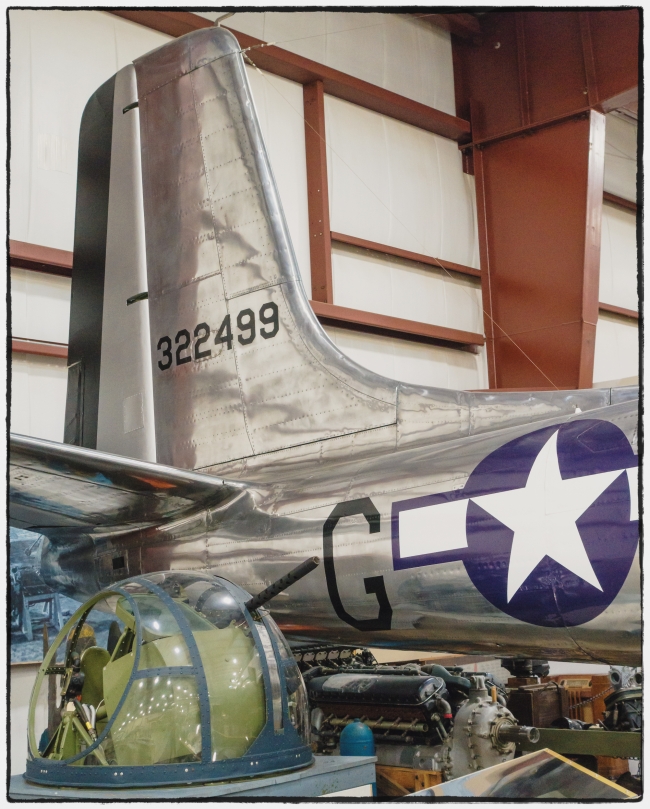According to the Museum’s website (which also includes technical specifications):
Courtesy of the City of Bridgeport, CT.
The A-26 was developed by Douglas Aircraft as a replacement for their A-20 “Havoc” to fulfill a requirement for a multi-role aircraft for both low-level ground attack and medium-altitude precision bombing. First test flown in 1942, it exceeded every stipulated design specification. With its twin 2000hp Pratt & Whitney R-2800 engines, the “Invader” was faster, had better performance and could carry more of a bomb load that either of the two primary medium bombers at the time, the North American B-25 “Mitchell’ and Martin B-26 “Marauder.”
Two variants of the A-26 were produced; the “B” with a solid nose that could be configured with a combination of machine guns and cannons, and the “C” with a glass nose which held a bomb sight. The glass nose section of a “C” could be exchanged for a solid nose in only a few hours based on operational roles. Its devastating firepower made for a formidable weapon when it entered combat in 1944. It was the last U.S. Army Air Force ground attack and tactical bomber introduced in World War II.
Re-designated the B-26 in 1948, the plane served in the Korean Conflict and flew day and night interdiction missions against the communist ground forces. It returned to action for a third time in Southeast Asia from 1960 to 1969. The craft also served with the Tactical Air Command through the late 1960’s and also saw service with Air National Guard units up to 1972.
The Museum’s A-26C was delivered to the USAAF in November, 1944 and was assigned to the 416th Bomb Group (Light), 671st Bomb Squadron stationed at Melun, France.
After the aircraft removed from the Air Force inventory in 1957, ownership passed to the National Metals Corporation of Phoenix, Arizona in June, 1958. After eight years of civilian service, ownership transferred to its final civilian owner, Consolidated Aircraft Sales of Fairfield, New Jersey. Consolidated Aircraft Sales eventually abandoned the aircraft at the Sikorsky airport in Stratford, CT in 1969. In 1971, the Museum took ownership of the aircraft from the City of Bridgeport who had authority over the airport.
The restoration began in November, 2003 and the plane was moved from the Restoration Hangar to the Military Hangar in the middle of 2012 where the restoration was completed.
Tail of the A26 with, in the foreground a Grumman 150SE-2 Turret from 1943. A nearby information board reads:
Grumman 150SE-2 Turret. 1943. This turret will be used on the New England Air Museum’s Grumman TBM-3E “Avenger” currently undergoing extensive restoration.
It was one of the first powered ball turrets adaptable to single-engine aircraft and was made possible by the development of a small amplidyne motor. It contained one fifty-caliber machine gun and the gunner was protected by 1/4“ and 1/2“ armor plate plus a 1-1/2“ thick armored glass window in front of him.
Taken with a Sony RX-100 M3.





